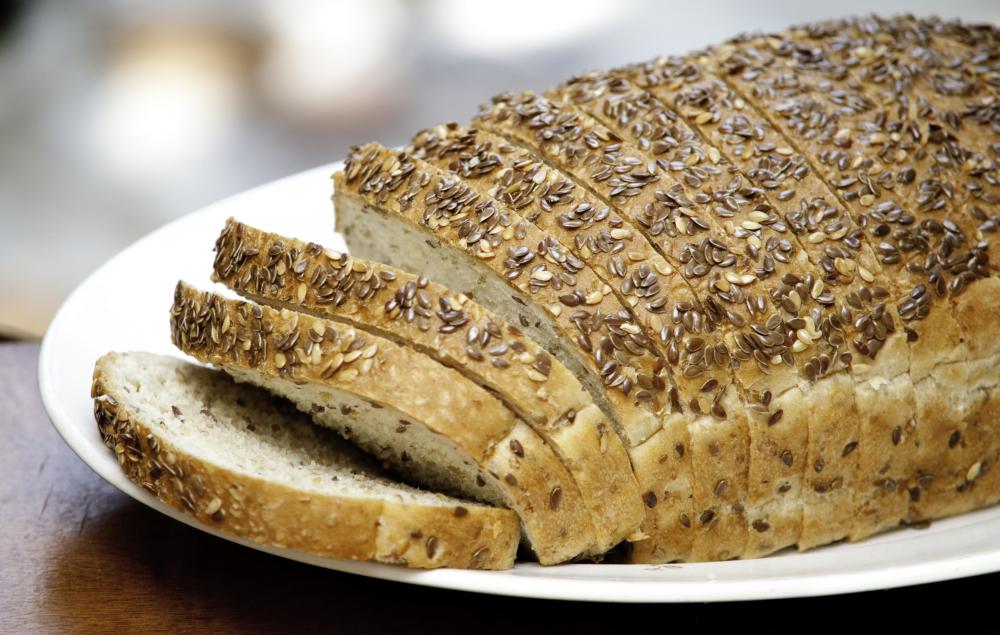At WiseGEEK, we're committed to delivering accurate, trustworthy information. Our expert-authored content is rigorously fact-checked and sourced from credible authorities. Discover how we uphold the highest standards in providing you with reliable knowledge.
What is the Glycemic Load Diet?
The glycemic load diet is a style of eating that aims to control glucose levels in the body, in order to control food cravings. Carbohydrates are the easiest form of fuel for the body to digest, but simple carbohydrates tend to raise glucose levels quickly and then drop levels fast. Fast drops in glucose levels cause cravings. The glycemic load diet includes foods that help to slow down digestion and glucose drops in order to eliminate the intense hunger often associated with fast dropping glucose levels.
Glycemic load measures the effect of foods on blood glucose levels. High glycemic load numbers mean faster metabolism of energy, and more chance of cravings. Foods high in simple sugars, like baked goods and sweet fruits — such as strawberries and watermelon, have high glycemic load numbers.

Experts refer to glycemic load numbers as the glycemic index. The glycemic load diet typically suggests eating foods that have low glycemic index numbers. These foods digest slowly and tend to have very little impact on blood glucose levels. Slow-digesting foods also provide energy to the body for longer periods of time, as opposed to fast-digesting foods with high glycemic index numbers.

Low glycemic load diets generally include carefully measured food portions, restricted caloric intake, and whole grains. Lean proteins are also allowed on the glycemic load diet. Following suggested servings based on the food pyramid is allowed, but foods should fall within the low to moderate glycemic load index.
Foods with low glycemic load have an index number of 10 or below. Moderate foods range between 11 and 19. High glycemic load foods will measure 20 or above. The glycemic load diet does not restrict carbohydrates, so it cannot be called a low carbohydrate diet. Instead, whole grain and complex carbohydrates are exchanged for the simple carbohydrates typical to a Western diet.

Dieters are usually not given a specific total number to aim for while on the glycemic load diet. For instance, hitting a total glycemic load of 500 for the day is not a requirement or stipulation. Calorie restriction is the basis of weight loss. Adding in 20 to 30 minutes of exercise every other day is also suggested to increase calorie burn and muscle mass.

The glycemic load diet was created by Dr. Robert Thompson. Dr. Thompson is a cardiologist who has also written books dedicated to controlling diabetes through diet, and a cookbook that works with the glycemic load diet. Weight loss on the plan averages one to two pounds (0.45 to 0.90 kg) per week.
AS FEATURED ON:
AS FEATURED ON:














Discussion Comments
I don't follow the glycemic index diet exactly, but I do try to be aware of the glycemic load of food I'm eating because more and more evidence suggests that eating food with a high glycemic load is bad for you in so many ways. It always seems like the big culprit is white potatoes!
A few years back, Newsweek did a big article about a fertility diet and which foods promoted or prevented infertility. The number one food associated with ovulatory infertility: white potatoes. (Other refined carbs, like white bread, were also a problem. Ice cream, surprising, turned out to be good for your fertility!)
Then I read recently about a study on which foods were associated with people gaining weight over a period of a few years. Again, refined carbs (not fat) turned out to be the biggest culprit and, again, the #1 food linked to weight gain was the good old Idaho spud.
One of the simplest ways to tackle a glycemic load diet is to find the free chart online that highlights foods as red, yellow, or green. This simple chart shows you which foods have a low GI value and which ones should be avoided.
Rather than looking up the glycemic index of the things you eat, the color coded chart provides you with an easy way to stay on track with your diet. Anything in the red should be eaten sparingly, while things in the green are pretty much your staples.
I found that printing out a copy of this chart and carrying it in my bag made life a lot easier. Who has the time to count calories and look up every little thing?
For those that have a history of diabetes in their families choosing to follow the glycemic load diet can be a really smart choice. My own doctor recommended this diet to me because my mother has diabetes and he was afraid I was going to follow her down the same path.
There are lots of books you can choose from when deciding to follow the glycemic load diet, but for myself I just went with the free recipes available online. The glycemic load diet is quite popular so it is easy to find lots of foods to try. Pretty much everything is available in a low GI variety, whether you love pizza or a variety of ethnic foods.
Post your comments